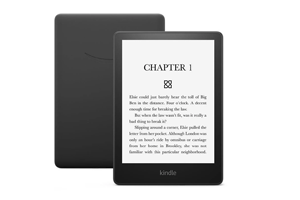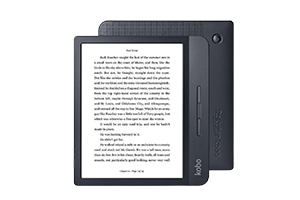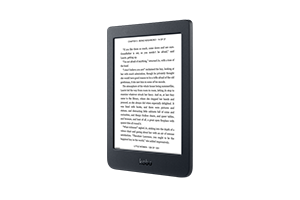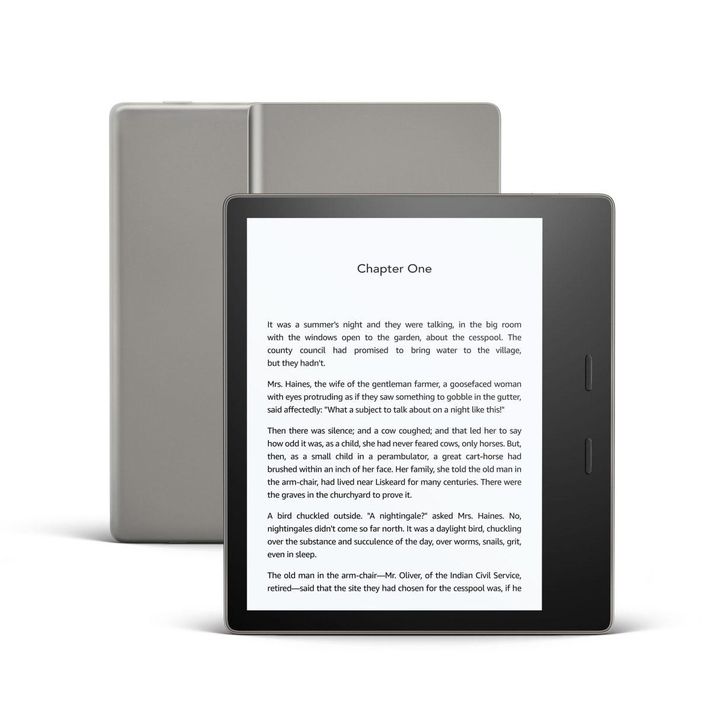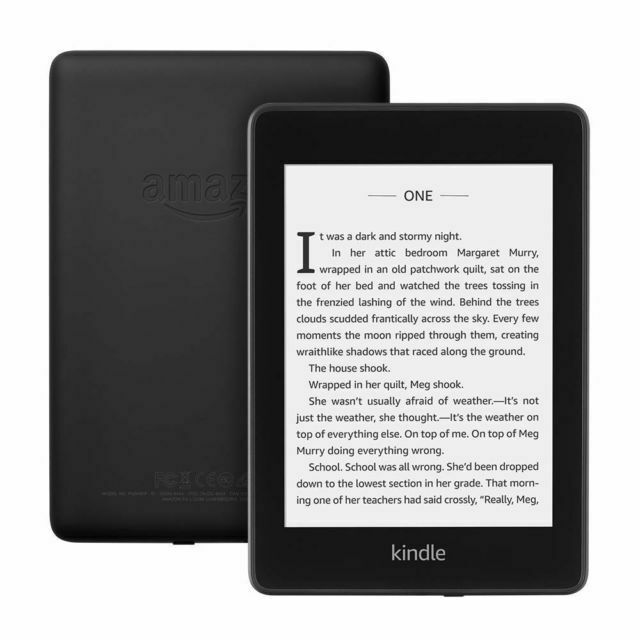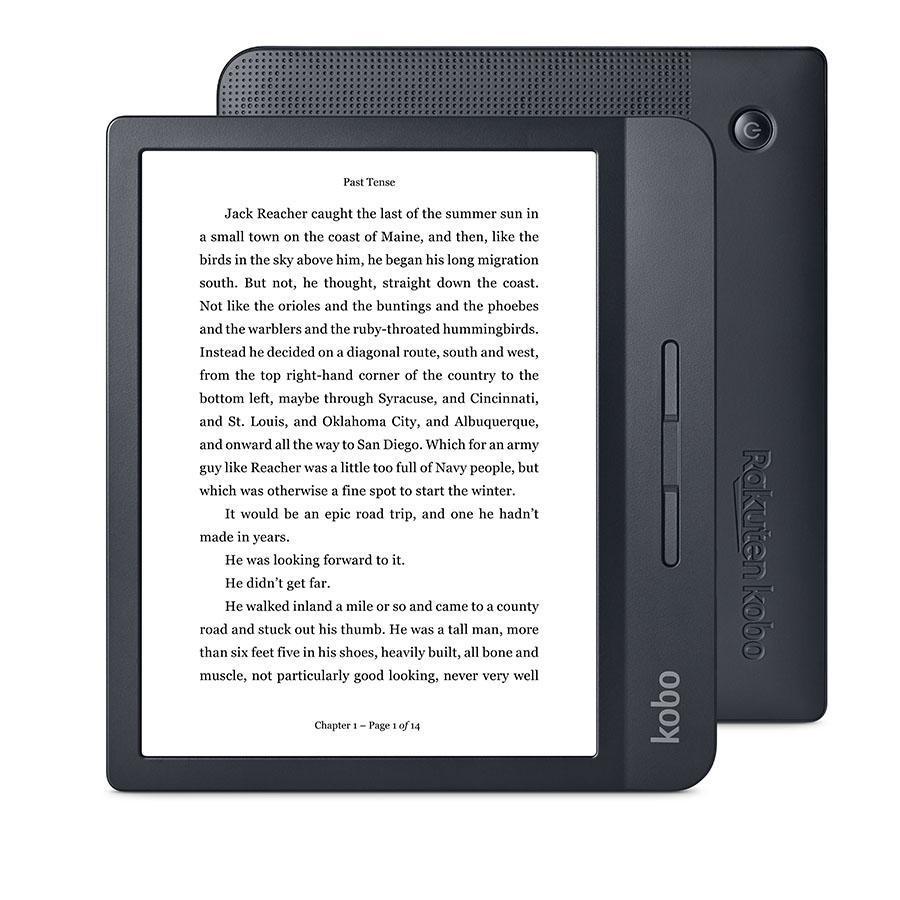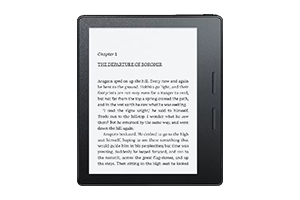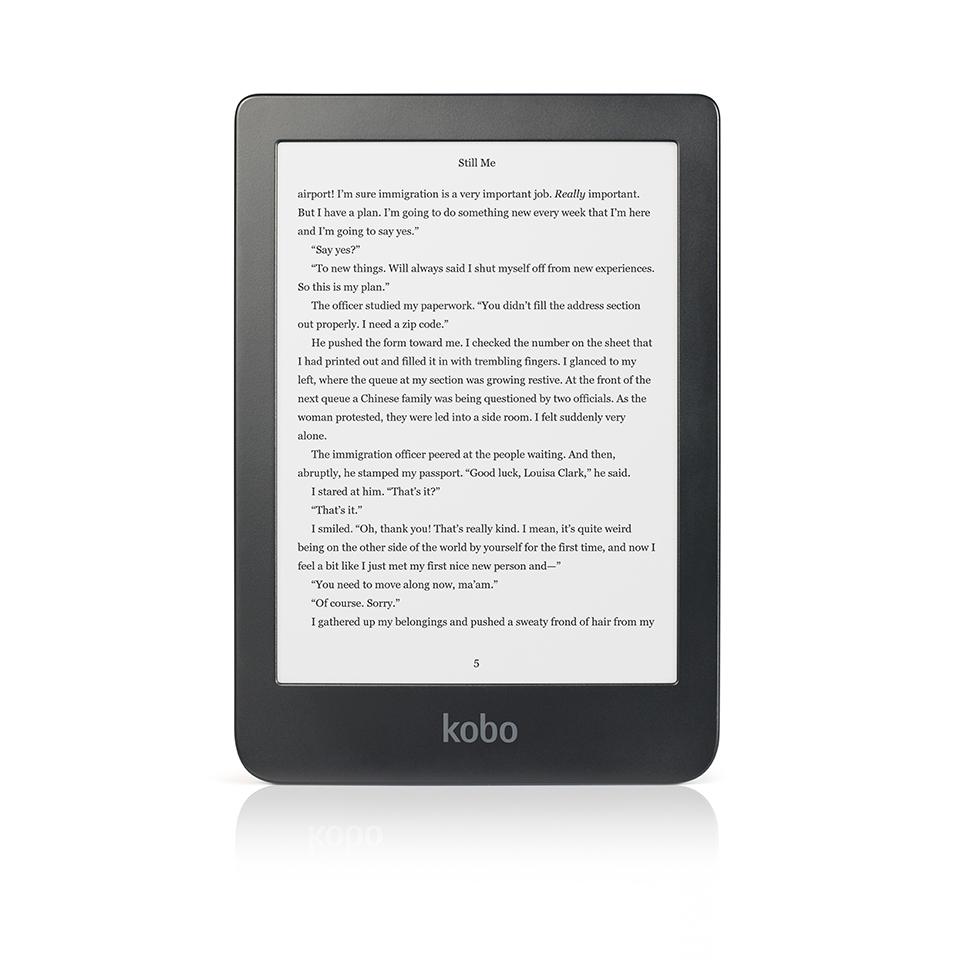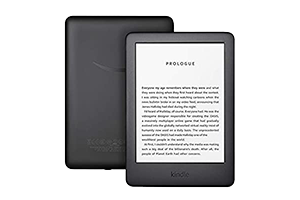All is not equal in the battle between Kindle and Kobo.
The best ereaders available in Australia
When it comes to smartphones and laptops, there are so many different brands and models out there, it can be pretty overwhelming to make that final decision. The same can’t be said for ereaders.
If you’re a bookworm looking to go digital, you only have two choices of brands (Kindle or Kobo) and half a dozen models to choose from. That said, with fewer options, it can often be even trickier to narrow down which one is best for you.
To help make that decision a little easier, we’re breaking it down into three price categories: budget (under $150), mid-range (under $250), plus our top pick overall.
- : Best ereader overall
- : Best cheap ereader
- : Best mid-range ereader
- : Best Kindle ereader
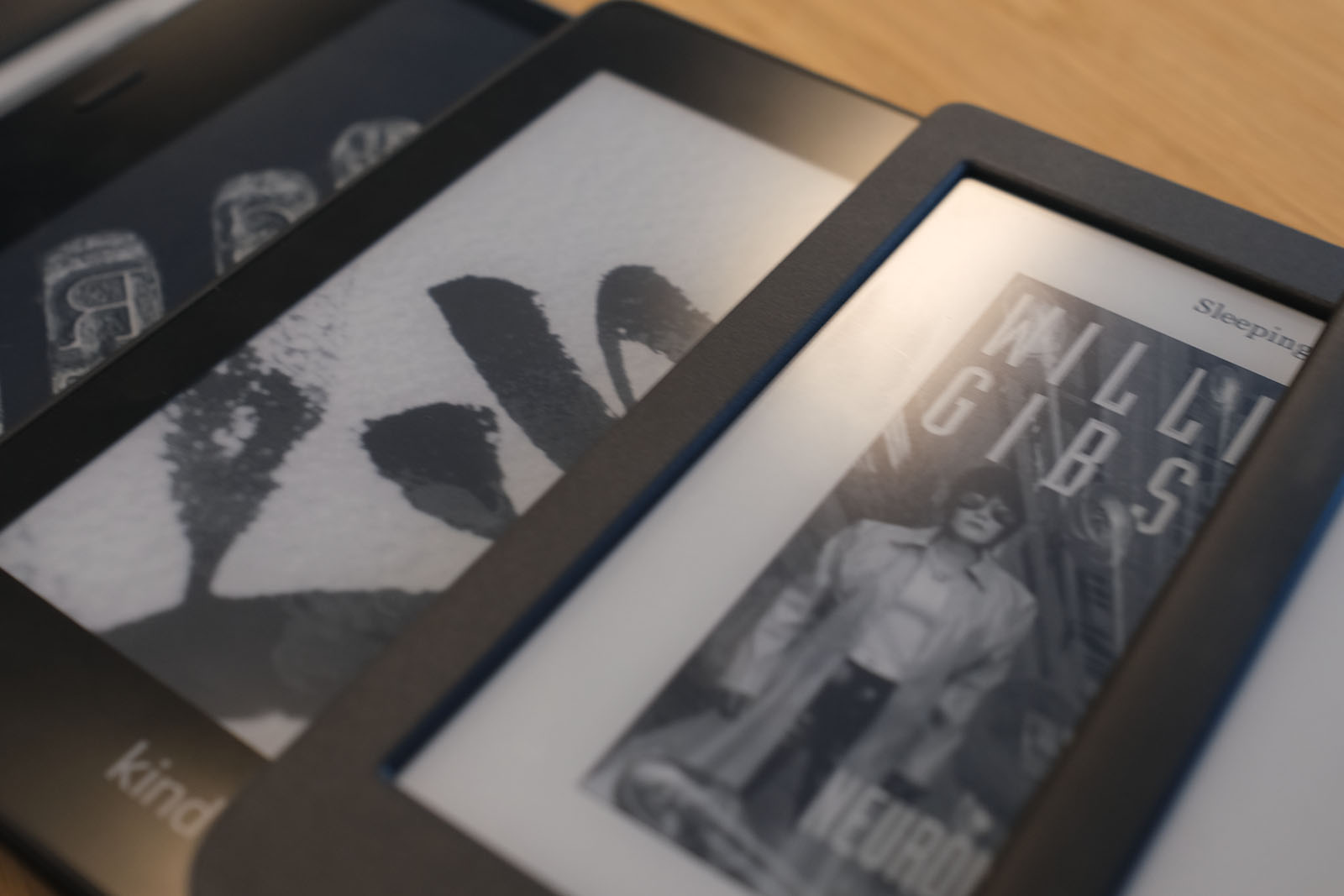
Kobo Libra H20
Best ereader overall
I spent about 1,400 words waxing lyrical about the Kobo Libra H2O, so it shouldn’t come as a huge surprise that it’s earned the title of the best ereader overall.
This beast has it all - waterproofing, page-turn buttons, adjustable warm light, comfortable design and larger 7-inch, 300ppi display which, in my experience, is the perfect size for reading most books - especially graphic novels (albeit in black and white). Plus, despite its premium features, it could still reasonably be called ‘mid-range’ thanks to its very reasonable $269.95 price tag.
Honestly, we can’t see any reason to opt for the more expensive Kindle Oasis or massive 8-inch Kobo Forma over the Libra H2O other than if you really, really want your screen to be flush with the device’s bezels or want your ereader made from a more premium material. Other than that, there’s no beating the all-round killer value that the Libra H2O offers.
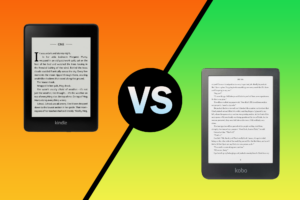
Kindle vs Kobo: Ereader showdown
In the battle of the ereaders, who comes out on top?
Kobo Nia
Best cheap ereader
If budget is your primary concern, the Kobo Nia is your best bet. Retailing for around $149.95, it’s $10 more expensive than the entry-level Kindle, but a few features give it the edge over Amazon’s budget ereader.
While the Kindle Store admittedly has pretty much every book under the sun, it’s basically your only option for buying books on a Kindle. With the Kobo Nia, you can purchase ebooks from the Kobo Store, third-party retailers like Booktopia and Dymocks, and even borrow ebooks from your local library.
Design-wise, the Nia comes up trumps yet again with its grippy backing (perfect for long reading sessions) and 6-inch higher-resolution 212ppi display, compared to the meagre 167ppi display (also 6-inch) found on the base Kindle.
Kindle Paperwhite
Best mid-range ereader
There’s not much separating the Kindle Paperwhite and its closest rival, the Kobo Clara HD. They’re almost the same price ($239 for the Paperwhite, $189.95 for the Clara HD), come with the same 8GB storage, 300ppi display and bright backlight. However, the Paperwhite’s waterproof body and flushed screen just put it in front of the Clara HD, which is susceptible to splashes and sports a recessed display.
It’s comfortable to hold, reasonably priced, and thanks to its slim, lightweight, waterproof design, the Paperwhite is the perfect companion for everything from commutes to beach trips.
Amazon Kindle Oasis
Best Kindle ereader
At an RRP of $399, the Kindle Oasis definitely isn’t cheap. However, for your money, you’ll get a beautifully-designed aluminium body and the most features found on any Kindle model to date.
Like the Kobo Libra H2O, it sports a 7-inch, 300ppi display and page-turn buttons for easy single-handed reading. It looks great and is reasonably comfortable to hold, but when you can get the Kobo Libra H2O for more than $100 less, it’s a far less tempting deal.
Ereaders we also considered
Kobo Clara HD
At this price range, you’ll be happy with either the Paperwhite or the Kobo Clara HD. It simply comes down to what’s most important to you: waterproofing or warm light.
Though the Clara HD isn’t waterproof, it does feature the latter, so for avid nighttime readers, there’ll be less eye strain than you’d find with the basic white light found on the Paperwhite. We also prefer the Kobo’s software and the fact that it’s compatible with any .epub file, which are far more ubiquitous than Kindle’s proprietary ebook files.
Amazon Kindle (10th gen)
While we prefer the Kobo Nia, the Kindle is by no means a bad ereader.
In fact, if you’re already pretty ingrained in the Amazon ecosystem, you may prefer the Kindle thanks to Prime Reading (which gives Amazon Prime subscribers free access to over 1,000 ebooks) and Kindle Unlimited, the company’s subscription book service. On the downside, it’s not quite as comfortable to hold, and that lower-res display doesn’t play as well with graphic novels and ebooks featuring images.
Ereader buying guide
If you're in the market for an ereader, there are a few factors you'll want to consider before making your choice. The first of these is whether you have any ebooks and, if so, what format they're in. If you've already built up a decently large library of purchases on the Kindle store, it may be more trouble than its worth to start over from scratch on with an ereader that won't play nice with Amazon's storefront.
On the other hand, if your ebooks have been acquired from a third party, you'll want to make sure that any potential ereader will play nice with that format: be it MOBI or EPUB. Those with a particularly large library may want to double check that their device has enough storage space to accommodate it all.
Beyond these more technical specs, other considerations here should include water resistance and backlighting. The former will mean you can comfortably take your ereader to the beach or pool without worries, while the latter will make it practically possible to keep reading in low-light situations where it wouldn't be otherwise.
The final thing that shoppers may want to consider before pulling the trigger on any ereader is the size. Most ereaders tend to be either 6-inches or 7-inches in size, and it might be worth taking the time to drop by your local JB Hi-Fi and get a sense of which form-factor is more comfortable for you.
The differences between Kindle and Kobo are much like the differences between iOS and Android. Both do the same thing, just in different ways.
While Kindle has the benefit of reading social network Goodreads integrated into all of its devices, its software is limited in terms of what file types it's compatible with. Kobo, on the other hand, is compatible with .epub files, the most popular ebook format among third-party retailers and libraries, while Kindle users are stuck with Amazon's proprietary file type, meaning you're stuck buying books directly from the Kindle Store.
For a full breakdown of the differences between the two (and which brand we prefer), check out our full Kindle vs Kobo guide.
Ereader FAQs
If you want to read a lot of ebooks and don't want to carry an expensive or comparatively heavy tablet around with you everywhere, then a dedicated ereader like the Kobo Nia can be a great device to have.
Whether an ereader is worth it arguably comes down to how much you read and how much more convenient that an ereader would be relative to physical books. If you're only reading a single paperback every few months, maybe dropping a couple hundred dollars on a nice reader is hard to justify. However, if you're a more ravenous reader or frequently irked by the inconvenience of having to fit a hardbacked volume into your bag, then a dedicated ereader is probably going to be worth the money.
An ebook is a digital version of a physical text. It's sort of like the MP3 of books.
Meanwhile, an ereader is a slate-like device that's primarily designed for the reading of ebooks. To build on the analogy above, it's basically an iPod for ebooks.
In addition to dedicated ereaders, ebooks are able to be read on computers, via web browsers, smartphones and even tablets.
While there are some advantages that come with using a tablet like the iPad as an ereader, something more specialised like a Kindle can offer better battery life and an overall more pleasant reading experience.
While staring at anything for long periods of time is rarely good for your eyes, ereaders do have an advantage over tablets in this regard.
Studies have shown that e-ink displays like the one on the Kindle induce less eye strain than LCD screens do.
The iPad is a tablet, not an ereader.
It can be used as, and might well make sense, as an ereader for some consumers, but it's just one of many things that the iPad can do rather than the sole niche that the Kindle caters to.
Related Articles




